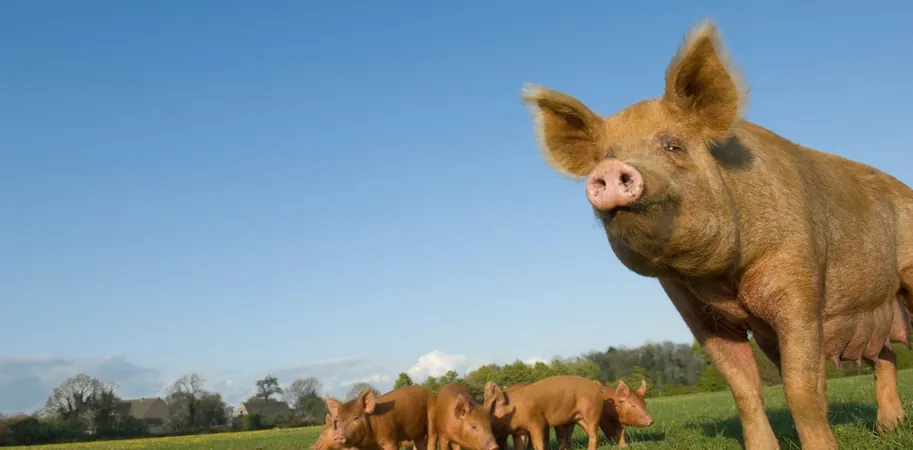
Alarm Bells Ring as Bird Flu Strikes Pigs – Here’s What You Need to Know!
2024-11-04
Author: Daniel
Introduction
In a startling development, H5N1 bird flu has been detected in pigs, raising significant concerns among virologists. This strain of influenza, which has rapidly spread across the globe since 2020, now poses a unique threat as it infects a new host species. A case was reported on a small non-commercial farm in Oregon on October 29, where a nasal swab from a healthy-looking pig tested positive for the virus. While this may seem like a minor incident, the potential implications are alarming.
Current Status of H5N1 Outbreaks
As many as 58 countries have reported outbreaks of H5N1 among domestic poultry, and it has wreaked havoc on wildlife populations, leading to severe declines in seabird colonies and unexplained deaths among sea lions. The emergence of H5N1 in pigs is particularly concerning given the virus's ability to jump species and possibly combine with human flu strains, which could create a new infectious threat to humans.
The Significance of Pigs in Virus Transmission
While it's unclear whether the pig was truly infected or merely exposed to contaminated material from the infected poultry on the farm, one fact remains clear: the possibility of a "spillover" event, where a virus spreads to a new species, is on the minds of virologists. Incidents of H5N1 appearing in various animal species, including alpacas earlier this year, highlight the risk.
Why Virologists Are Concerned About Pigs
But why do virologists focus on pigs specifically? Pigs are known as "mixing vessels" for influenza viruses due to their anatomical structure. Unlike other animals, pig cells can be infected by both bird and human influenza viruses, creating the potential for novel variants to emerge. Historically, many influenza pandemics have stemmed from pig populations due to this unique ability to harbor multiple strains.
Potential for a Human Pandemic
The mixing of avian and human viruses is a crucial concern: if H5N1 were to co-infect a pig alongside a human flu strain, there’s a possibility that a new, highly transmissible virus could form, capable of sparking a human pandemic. Such a scenario raises fears, given that the initial outbreaks of swine flu in 2009 resulted from a similar genetic mix.
Current Expert Assessment
Despite this latest detection, experts believe it remains an isolated incident, and current evidence suggests that H5N1 might struggle to establish sustained transmission in pigs. This is reinforced by the fact that, despite extensive exposure over the past few years, this is the first suspected case of H5N1 in pigs.
Concerns During the Winter Flu Season
However, the onset of the winter flu season for humans, coinciding with H5N1's continued circulation on U.S. farms, is a troubling factor that increases anxiety among virologists. Any developments that suggest H5N1 might mutate or adapt, especially in a host like pigs capable of mixing viruses, must be monitored closely.
Conclusion
As we navigate this chapter in zoonotic disease emergence, understanding the dynamics between animal viruses and potential human health risks is critical. The world holds its breath, and all eyes will be on any further developments regarding H5N1 in pigs and beyond. Stay tuned as this story unfolds—it's a developing situation that could affect public health on a global scale!


 Brasil (PT)
Brasil (PT)
 Canada (EN)
Canada (EN)
 Chile (ES)
Chile (ES)
 España (ES)
España (ES)
 France (FR)
France (FR)
 Hong Kong (EN)
Hong Kong (EN)
 Italia (IT)
Italia (IT)
 日本 (JA)
日本 (JA)
 Magyarország (HU)
Magyarország (HU)
 Norge (NO)
Norge (NO)
 Polska (PL)
Polska (PL)
 Schweiz (DE)
Schweiz (DE)
 Singapore (EN)
Singapore (EN)
 Sverige (SV)
Sverige (SV)
 Suomi (FI)
Suomi (FI)
 Türkiye (TR)
Türkiye (TR)